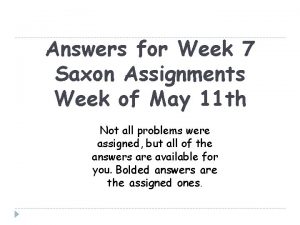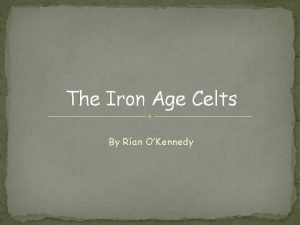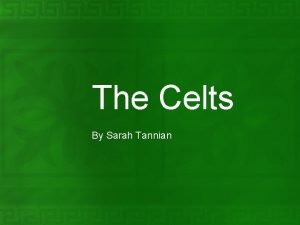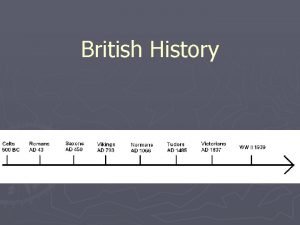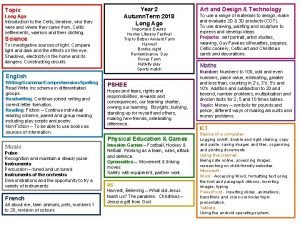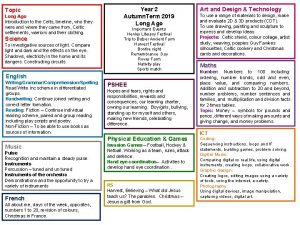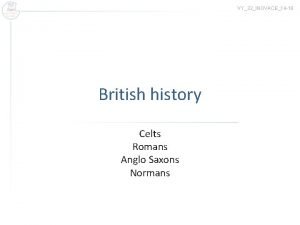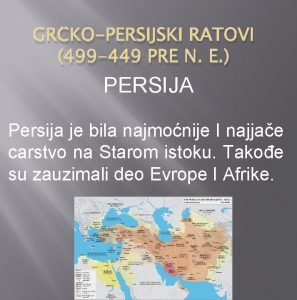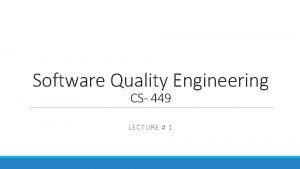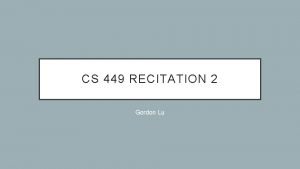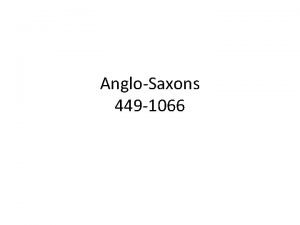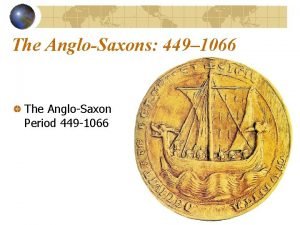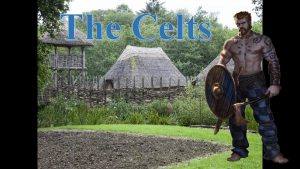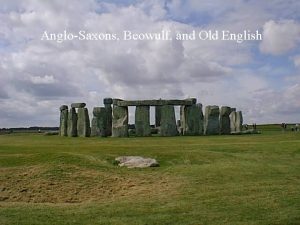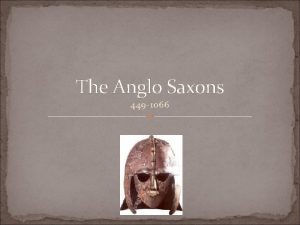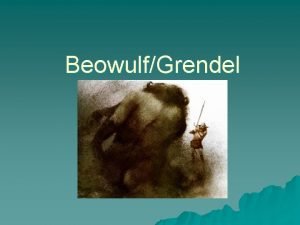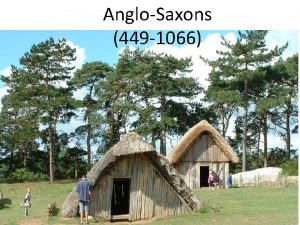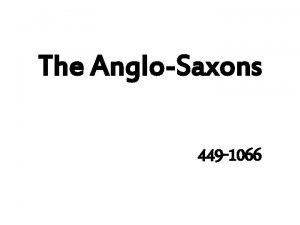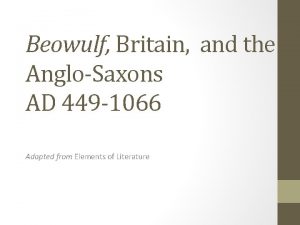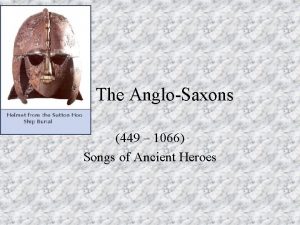The AngloSaxons The Celts 449 1066 What Caused












- Slides: 12

The Anglo-Saxons & The Celts (449 – 1066)

What Caused the Celts to Move? • Read page 27 and explain why the Celts were forced to move. • Where might they have moved? • What country is this today?

Origins of the Anglo-Saxons • During the sixth and seventh centuries these Germanic invaders started to carve out kingdoms in modern day England • First called Saxons, the German invaders were later referred to as Angles. • Gradually the cultures unified • Came to be known as Anglo-Saxon or English.

Characteristics of the Anglo-Saxons - Read page 28 - What are five main characteristics of the Anglo-Saxons?

Daily Life of Anglo-Saxons • • Organized around clans or tribes Followed concept of reciprocity Warfare was the order of the day. People were fiercely loyal to their individual clans and leaders. Fame and success were gained only through loyalty to the leader. They tended to live close to their animals in singlefamily wooden buildings that surrounded a warm-lit communal hall, or mead hall. Believed that heroic deeds would ensure your eternal survival Remembered heroes through songs and oral poems.

An Anglo-Saxon Village

Anglo-Saxon Religion • The Anglo-Saxon religion was very dark – Honoured Warrior Gods • Believed: – Life was hard – Would be remembered after death if you achieved glory in battle – Fate • Concerned with ethics – Earthly virtues of bravery, loyalty, generosity, and friendship. • Convert to Christianity in 500’s

Alfred the Great • Read page 28 – Who was Alfred the Great? – What made him so great? – In your opinion, who was greater: Alfred or Charlemagne?

The Anglo-Saxons From Then to Now • The Anglo-Saxon territory was divided into seven separate kingdoms commonly referred to as the heptarchy. Each kingdom was ruled by a king. • By the middle of the ninth century the royal family of Wessex was universally recognized as the English royal family. • Basis of modern England’s monarchy

Who were the Celts? • • Both a strong female and male deity Fond of color and wore as many colors as possible Both sexes wore long wool cloaks to keep warm. Women also wore make up to brighten their cheeks and eyes and sometimes paint stripes on their faces • Fond of jewelry and both men and women used it to decorate themselves • During battle, warriors went naked or shirtless and covered their bodies with designs in a die called wode

Religion of the Celts • Animism – Belief in spirits – Spirits were all around and needed to • Had priests known as Druids – Acted as intermediaries between the gods and the people. • Characteristiscs – Ritualistic dances – Human sacrifices

The Role of the Celts • Read pages 29 -30 – Describe the factors that contributed to Irelands role in providing a safe haven from Vikings and in preserving ancient knowledge
